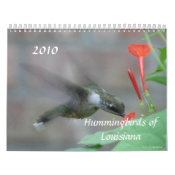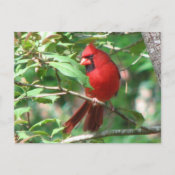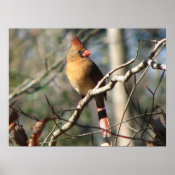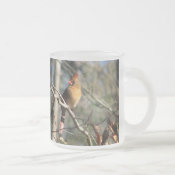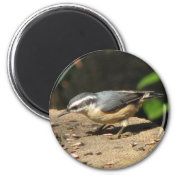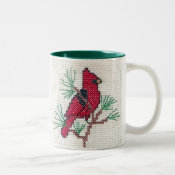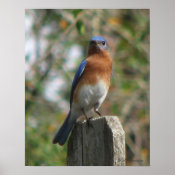| 1 Red-shouldered Hawk | 17 Northern Cardinal 160 Red-winged Blackbird 10 Common Grackle 14 American Goldfinch 1 Golden Crowned Kinglet 2 Orange Crowned Warblers 1 Belted Kingfisher 4 Black Vultures 9 Wood ducks 2 Eastern Woods Phoebe 2 Yellow bellied sapsucker 4 Yellow-rumped warbler 2 Blue-Gray gnatcatcher 1 Hermit Thrush 3 Tree Swallow 1 Eastern Bluebird 1 American Woodcock 1 Great Blue Heron |
Sunday, December 31, 2006
Flooding & Christmas Bird Count
Saturday, October 28, 2006
Otter, Deer & Another Foundling, Oh My!
Now that the cool weather has arrived in
We began seeing a beautiful, long-haired black cat in our neighborhood a few months ago, but it was afraid of us and always ran away or hid. But for some reason, on Oct. 11th, she came out of hiding and meowed at my husband. He ran inside to get food and she ate it. Within an hour she was letting us pet her and even pick her up. We made a place for her in an out-building and started calling around to try to find her a good inside home. No one we contacted had room for her and as we got to know her, we realized what a gentle, special cat she is. She met our 2 dogs and 2 cats outside and was very nonchalant with all of them. After we heard her in a fight with another animal one night we decided to bring her in and take her to the Vet. Cats can do so much damage to the wildlife. It’s in their nature to hunt and kill so now Star is one of 3 inside cats that only go outside on supervised walks. If you want to attract wildlife to your yard you must take measures to protect them from your pets.
Sunday, October 1, 2006
White Tailed Deer, Kingfisher and Plant Rescue
This morning, when we were half way to the river, we saw the white tails of 3 deer as they made a hasty retreat towards the Tchefuncte. All the corn that we put out for the wood ducks was gone. I guess with all the habitat destruction that has been going on around us, our property must have most of the browse plants that they need to prepare for the winter months.
When we reached the river we heard the chattering of a Belted Kingfisher. This fellow will sit right across the river and chatter until our dog, Rio, barks at him. The kingfisher will fly up river & back down to us as if he wants Rio to chase him. We’ve also seen a Kingfisher up at our pond by the house. The last few days we’ve seen what looks like some mallard ducks and also the resident wood ducks.
When we got back to the house we hurriedly prepared for a native plant rescue mission. One of the other members of the FNPS had alerted us about some beautiful wildflowers (including unusual, possibly rare milkweed, unusual large lavender asters, mountain mint and 20+ other species of native plants) that would soon be destroyed when another strip mall is built. We were able to move about 50+ plants today despite the rock hard soil. We plan to go back after we get a good rain, when it’s easier to dig. We will probably have to go on many more of these missions because St. Tammany Parish is in a building frenzy.Wednesday, September 20, 2006
The Destruction Continues, but the FNPS brings hope
Apparently we spoke too soon. What we thought was the culmination of the storm debris removal project from the creek was just a 3 day siesta. The heavy equipment, chain saws and machetes came back with a vengeance and went deeper into the woods. Countless more live trees were scarred and damaged when the ones that were broken by Hurricane Katrina were pulled out of the stream. The smell of diesel fuel permeates the once fresh air while our eardrums are pummeled with the sound of the giant chipper / shredder machine. The trail (more like road) that they carved through the forest by the creek is wider that the creek in most places. What is really being achieved by this project? The healthy trees & shrubs that they are damaging or destroying could have absorbed hundreds of gallons of rain water. The parish would be better served if restrictions for new building that included raised houses instead of red clay fill and cement slabs were enforced in low, wetland & flood zone areas.
Here are some statistics that were compiled by the LSU AgCenter that say a lot:
Tree Facts: The Benefits of Trees
On a lighter note, the Folsom Native Plant Society’s meeting at the Covington Public Library last night had excellent attendance and featured a wonderful presentation by native plant experts, Latimore Smith (Director of TNC Science & Stewardship) and Nelwyn McInnis, The Nature Conservancy Florida Parishes Director. We were treated to a history of the Longleaf Pine forests that once covered all of St. Tammany Parish. We also learned about the 19 species of rare native plants that are preserved within TNC St. Tammany Parish properties. The FNPS is growing in numbers and we are trying to reach the public, especially those that are new to the North Shore, to teach them about the value of our native flora.
Wednesday, September 13, 2006
Ruby Throat Hummingbird Migration, Kingfisher and Habitat Destruction
Linda and I banded ruby throated hummingbirds this morning. This is fall migration and a new wave came in ahead of the little cold front. This morning was our best in many months with 34 new captures. There were several females, adult males and many immature males. On our walk to the river we saw a Belted Kingfisher dive into the water after a fish.
The St. Tammany Parish / NRCS stream debris removal and destruction project seems to be coming to an end by our property. They agreed to stop before our property line thus saving a large area of important hummingbird breeding and nesting habitat.
We weren’t so lucky with the new neighbor who bought the land across the river and who just finished bulldozing hundreds of native shrubs and trees all along the Tchefuncte. Now bare dirt that will be susceptible to soil erosion is where wild blueberries / Huckleberries (Vaccinium spp.), native azaleas, strawberry bushes and arrow-wood viburnums full of fruit once stood. Over 30 different species of birds and many mammals could have used that fruit since Katrina had already destroyed so much of the food supply and habitat. We are also concerned about the hit that the fish and other organisms in the river will take when the rains and resulting yearly winter & spring floods wash the soil from the bare land into it.Tuesday, August 29, 2006
Rufous Hummingbird

Linda came today and banded a very colorful, very young, female rufous hummingbird. She was so young that she had 100% corrugation (bumps that wear off with age) on her bill. This is the first rufous that Linda has banded of the 2006-07 winter season. This immature female rufous was first observed on
A big wave of ruby-throats came to our habitat this weekend, too. Now this is more like it! I sure did miss those little guys & I'm glad they're back. I'm mixing sugar water by the half gallon.
Monday, July 31, 2006
Habitat Restoration
Mulberry trees provide food for over 30 species of birds as well as numerous ground animals and butterflies. Live oaks are long-lived, hurricane resistant trees and their acorns will provide food for a variety of birds and animals. They are slow growing, but years from now they will be greatly appreciated by others; for as we know, we don't plant trees for ourselves, but for others.
The trees we received will be used in various local restoration projects. Members of the Folsom Native Plant Society will also distribute some to individuals whose wildlife habitats were hard hit by the storms. Thousands of acres of natural habitat was destroyed by Katrina and more is being lost to the rapid home construction throughout St. Tammany Parish. Club members are involved in replanting both public and private areas of lost habitat with native trees.Friday, July 14, 2006
Egrets, Rabbits & Black Racers
Near the house, 14 hummingbirds were banded this week and most were young males that hatched this spring. The numbers of ruby-throated hummingbirds are still down from previous years.
In early May, we watched a slider turtle bury 18 eggs just outside our bedroom window. This month we are eagerly waiting for the turtle eggs to hatch. We're hoping that the drought we have been suffering through won't affect the developing eggs. We have gotten some relief from the drought, but our rain total is still more than 15" below normal for this year.
Tuesday, June 20, 2006
Nesting Birds, Multiplying Mammals & Irises
This spring we’ve had a population of mammals, especially cottontail rabbits and cotton rats. We also saw what looked like a young coyote hanging around and coyote droppings were found by the pond. This is not one of the predators that we encourage since they have been known to kill small pets -- just another reason why we keep our pets inside. The drought has brought the armadillos out of the woods to search for grubs in our flower beds.
Tuesday, June 13, 2006
Prothonotary Warblers, Great Crested Flycatchers & Eastern Bluebirds
After a slow start, the nestboxes on our small trail had a high percentage of occupancy this year. This was probably due to the fact that most of the natural cavities were knocked down by H. Katrina. Five pairs of Carolina chickadees had successful nests, which was such good news because they haven't been doing well the last few years.
Three different pairs of Prothonotary warblers were successful: 1 in a bluebird box, 1 in a chickadee size box & 1 in an ornamental old barn wood box on our front porch. I have pictures of the pair on the front porch. It looks like they are starting a 2nd nest, too.
A pair of Great Crested Flycatchers built in a screech owl sized box in the vegetable garden and the last of their young are fledging as I write. We found what we think is a great crested flycatcher's nest in box #13. We are unable to check it regularly because you have to scale 4 fallen trees and balance on logs to reach it. It also has never had a nest in it until this year. We considered making it box 12b, but maybe it's not jinxed after all.
After a successful 2nd nesting attempt producing 4 fledglings (I saw them on the wire this a.m.) the eastern bluebirds have laid 4 eggs & the hen is beginning to set in one of the houses from the LA Bayou Bluebird Society.
Tomorrow we check the boxes down in the woods. We're hoping for 2nd nests for the 2 Prothonotary pairs. This a.m. we watched a family of brown headed nuthatches feed their young sunflower seeds. I guess they found a cavity in a dead limb somewhere for their nest. There was another family using the feeder down by the river.
Monday, May 22, 2006
Wildflowers Blooming Out of Season
Spring this year has also had unusual weather with several cold snaps well into April and very dry weather. We are currently experiencing a drought and many of the plants that were damaged by Katrina are dying because of the lack of rain. This is the second driest Spring in weather history.
Sunday, April 23, 2006
Eastern Box Turtle Rescue
Thursday, March 30, 2006
Another Katrina Victim
Saturday, February 11, 2006
Nest Box Trail Restoration
We couldn't have gotten our trail ready so quickly without Evelyn, Kenny and the LA Bluebird Society. They came to the rescue with the offer of N.A. Bluebird Society approved nest boxes to replace the ones that were destroyed by H. Katrina.
On January 2, 2006 we saw a rufous hummingbird in our yard. It was banded by Linda Beall and identified as a female. She spent the entire winter with us and did not migrate until late March.


